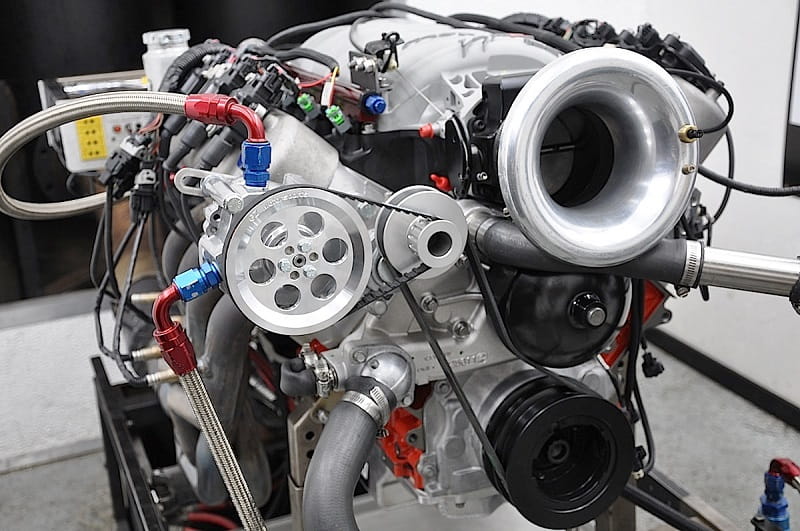Service Brake Assist Chevy catdumptruck.com | Your Chevrolet’s warning light indicates a malfunctioning emergency braking or brake assist system.
The best way to troubleshoot the brake assist problem is to carry a code reader and basic emergency supplies. Fortunately, you can usually fix this problem yourself if you know what to look for.
Listed below are the most common issues and how to resolve them. Hopefully, these tips will help you fix your brake assist problem quickly.
Service Brake Assist Chevy
Vacuum Pump
Your Chevy’s vacuum assist pump could be suffering from a problem. While GM says this problem is rare and only occurs at low speeds, it could mean that the vacuum is inadequate to properly power the brake assembly.
As a result, your brake pedal will feel harder and you may experience longer stopping distances. GM says this problem is caused by a buildup of debris on the pump’s filter screen. If you fail to change your oil regularly, this problem could worsen.
This problem is more likely to occur at low speeds when softly applying the brakes. The driver may notice a decrease in the amount of brake power and a long stopping distance.
Additionally, the driver may hear a ticking noise coming from the engine compartment. After a couple of minutes, the “Service brake assist” message should appear on the dashboard. Once the problem has been identified, your brakes will need to be serviced.
General Motors has notified owners of six models in the U.S. about the vacuum brake assist pump issue. This defect affects brake systems, making them more difficult to engage, which increases the risk of a crash.
The affected vehicles include the 2014-2017 Cadillac Escalade, GMC Yukon, Chevy Tahoe, and the Chevrolet Suburban. To date, there have been 113 accidents and 13 injuries associated with the vacuum brake assist problem.
Symptoms of the problem: If your vehicle experiences this problem, your brake pedal will feel softer than usual, or you may notice a difference in pressure required to press the brake pedal.
In some cases, the brake pedal will even feel harder than usual, causing you to apply more pressure to the brake. If you notice any of these symptoms, the problem is likely the vacuum pump, which requires service.
The problem has not been diagnosed yet, but GM issued a Technical Service Bulletin to dealers in November 2018, which outlined the potential consequences.
Another symptom of a failure in the brake booster vacuum pump is intermittent power brakes. Since most booster vacuum pumps are electric, intermittent operation could be a symptom of a faulty pump.
Your power brakes will not function without a constant supply of vacuum, and you will have to apply more pressure to the brake pedal to stop the vehicle. A new vacuum pump will eliminate this problem for good. A new battery will also eliminate the message.
There are several parts involved in a brake booster. The booster pump is an integral part of the braking system and helps to increase braking pressure.
Diesel and turbocharged vehicles use the brake booster vacuum pump. They are also used in high-altitude vehicles. However, you must make sure that the booster vacuum pump has been properly installed before the brake system can be restored. So, if you need to replace the booster pump in your vehicle, consider these parts and tips before you get started.
Failure of Brake Assist System
A failure of the brake assist system in a Chevrolet can be caused by a number of different issues. One common problem is a brake warning light. Another problem is a brake pedal that does not engage in the usual way.
A malfunctioning brake pedal can indicate a leak in the system. If you notice a brake warning light, you should replace the caliper and brake pads to solve the problem. The brake caliper can also cause this problem because it is not locked.
This problem has affected over 2.7 million vehicles in the U.S. and may have contributed to several crashes. General Motors is currently investigating the issue and has notified dealers of affected vehicles.
The defect is in a vacuum pump that helps vehicles brake. When the pump fails, the brakes cannot engage properly, increasing the risk of a crash. The brakes can fail, leaving drivers without control of their vehicles, leading to a crash or rollover at high speeds.
The issue was first reported by the Free Press on Jan. 29. Then, in January, GM issued another recall to correct the problem. By then, more than 1,700 customers had completed the repair.
Afterwards, they complained to GM corporate about the brake problem. GM eventually identified the problem and told dealers to fix the problem.
As of Tuesday, about 800 owners had received the fix. GM is still investigating the issue, but the aforementioned recalls show that the problem is widespread and is affecting more than just a few models.
The woman who filed the lawsuit says that her brake failed abruptly as she was backing out of her driveway. She was unable to stop, and the vehicle crashed into a car adjacent to their driveway.
The accident caused her to have to stand on the brake pedal with all her weight and force. Eventually, her car was repaired and she was able to drive again without incident. But the lawsuit isn’t over.
GM addressed the hard pedal effort issue in September 2018 with a GM Service Bulletin PIT5361D. The problem can also occur if the vacuum pump fails to operate properly.
The vacuum hose can become clogged with debris. Reprogramming the brake pedal control module can help fix the problem.
It is important to understand the causes and the solutions for this problem. It’s also important to know that a failure of the brake assist system in a Chevy can be caused by a variety of problems.
Power brake assist systems in Chevrolet models are prone to failure. One of the most common causes is premature wear and tear of the components.
A vacuum pump is the culprit in this issue, but other components may be affected, as well. If you’re concerned about your car’s braking performance, contact a mechanic. If your car doesn’t have a power brake assist system, you should get it checked as soon as possible.
Service Brake Assist Chevy
Resetting Warning Light
Resetting the warning light on your service brake assist Chevrolet may be simple but may not work if the problem is with the ABS.
If you have a car with ABS, the problem may be in the central computer, ABS sensor, or any other brake system component.
If it’s with the ABS, it’s best to have it repaired by a mechanic, but if the light persists, you may be able to solve the problem yourself.
To fix this problem yourself, first you must stop driving your car. Make sure you park in a secure area. Turn off the engine, then step on the brake pedal slowly.
If there is no resistance, the fluid isn’t flowing properly. The fluid should begin to increase resistance as the pressure increases in the cylinder.
If you find this solution doesn’t fix the problem, you’ll need to have it replaced. It costs around $100 to $150 to replace the service brake assist system.
If your ABS and TCS lights are both on, you may be having a bigger problem than you think. Turning the wheels is inconsistent, especially on bumpy or icy roads.
ABS and traction control will apply pressure to those wheels, resulting in insufficient pressure. If you suspect the problem is a more serious issue, call a mechanic as soon as possible. There are several methods to reset the warning light on service brake assist Chevy.
Hold the brake pedal for 5 seconds. In addition to holding down the brake pedal for 5 seconds, you can also try to find the manufacturer’s Mode S code by reading the odometer.
The 10-digit code is found on the instrument panel odometer, or on the owner’s ID card. If the code is not there, type the 10-digit number followed by an asterisk. Oftentimes the service brake assist light will illuminate and indicate that the car needs to be serviced.
To reset the service brake assist warning light on a Chevy, you should first check the service braking system. In many cases, the brake system is not functioning properly and may require repair.
However, if the brakes are functioning properly, the service brake assist warning light can be reset without a technician’s assistance.
You should be able to do this yourself in a few minutes. After examining your vehicle, the service brake assist light should appear again.
In the past month, GM has recalled over 1,700 pickups for the same issue. It took the manufacturer about a month to notify the dealers and issue a recall.
However, the company did not alert customers until after a full investigation of the issue. The automaker is taking steps to resolve the problem and is providing free loaner vehicles to customers. The company’s warranty covers the costs of the loaner vehicle.
How to Service ESC Chevy
https://chevroletforum.com/how-tos/a/chevrolet-silverado-how-to-reset-change-engine-oil-light-390458
- Used Hooklift Trucks for Sale: A Comprehensive Guide - April 2, 2025
- Hooklift Trucks for Sale in Florida: A Comprehensive Guide - April 2, 2025
- Hooklift Trucks for Sale in the UK: A Comprehensive Guide - March 31, 2025







